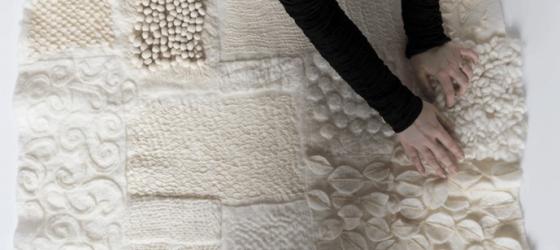Dove e quando
Friday, December 12: Aula Benvenuto, Stradone di Sant'Agostino 37, Genova
This workshop is the PEA appendix to the first TACTA conference, taking place in Genoa on the 11th and 12th of December (link to the program of the TACTA conference at the bottom of this page).
PROGRAM
15h00-16:30: Matthew Fulkerson (UC San Diego): Objects of Affection: Artifacts and the Duality of Emotional Touch
Chair: Silvano Zipoli Caiani
17h00-18:30: Camilla Palazzolo & Luca Marchetti (University of Genoa): Haptic Arts and the Aesthetics of Touch
Chair: Enrico Terrone
ABSTRACTS
Matthew Fulkerson (UC San Diego), Objects of Affection: Artifacts and the Duality of Emotional Touch
I have argued in several papers now that perception is inherently emotional. The targets of these emotionally charged experiences are perceptual objects. These objects do not align with our standard folk category of physical objects, for they can include things like songs, odors, and faces. In saying that our experiences of such objects are emotional, I mean to say that our experience of them has a positive or negative felt quality or valence, and this valence (along with other factors) can strongly influence and guide our actions. In this paper, I focus on the sense of touch, and on our emotional engagement with haptic artifacts. I first explore the duality of our emotional experience of haptic objects. This is the idea that in having such experiences, we can focus on the subjective qualities that we feel when we encounter felt objects (we find it unpleasant to touch the slimy stick), or we can focus instead on the objects themselves and their seemingly objective emotional qualities (the slimy stick is gross). From there, I focus on understanding the ways in which haptic artifacts can serve as objects of affection: genuine targets of emotional perceptual processing that yield both felt positive and negative experiences and motivational import, and in ways that influence our understanding and connection to those objects in both a subjective and seemingly objective way. Such a perspective provides a compelling framework for understanding our interactions with haptic artifacts, including our capacity to become attached to them and our ability to form robust aesthetic judgments about them.
Camilla Palazzolo & Luca Marchetti (University of Genoa), Haptic Arts and the Aesthetics of Touch
The paper offers a philosophical reflection on touch as a sense that has long been overlooked in aesthetics and the arts, yet is increasingly coming to the fore in contemporary installations and in museum practices aimed at greater inclusivity. The neglect of touch is reflected not only in the limited vocabulary available for describing tactile experiences, but also in the restricted understanding of how this sense can enrich aesthetic experience. We will first focus on the multimodal and phenomenologically rich character of tactile experience. We will then turn to the role of touch in everyday aesthetics and to the question of what we actually perceive and appreciate through touch. The paper will culminate in a discussion of artworks in which touch is central, and in the proposal of the term “haptic arts” as a distinct category encompassing works that rely on cutaneous, proprioceptive, and kinesthetic experience for their realization and appreciation.
